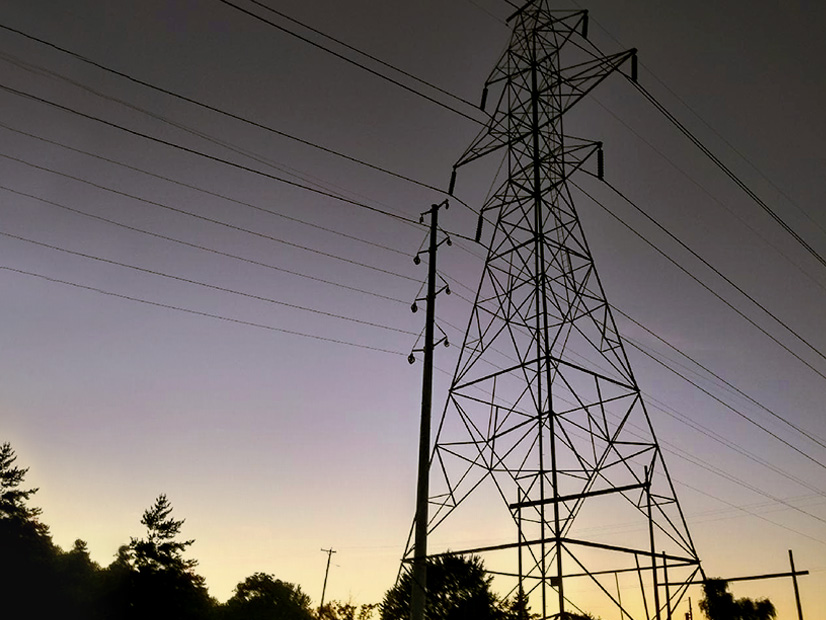With FERC potentially issuing a final rule on transmission planning this year, the issue of whether it should curtail competition is the subject of dueling reports filed in the Notice of Proposed Rulemaking’s docket.
With FERC potentially issuing a final rule on transmission planning this year, the issue of whether it should curtail competition is the subject of dueling reports filed in the Notice of Proposed Rulemaking’s docket (RM21-17).
The Electricity Transmission Competition Coalition (ETCC) filed supplemental comments Feb. 1 with a report extolling transmission competition’s benefits in response to a report filed in December from a group called Developers Advocating Transmission Advancement (DATA) arguing the opposite.
DATA is made up of transmission owners Ameren Services, Eversource Energy, Exelon, ITC Holdings, National Grid USA, Public Service Electric and Gas, and Xcel Energy.
“Contrary to their plea to revisit the commission’s prior determinations supporting competitive solicitations under Order No. 1000, the incumbent TOs fail to demonstrate that cost-of-service regulation is as effective as competition in establishing just and reasonable transmission rates,” ETCC said.
Competition disciplines cost, but regulated utilities with monopolistic rights and guarantees projects will have an incentive to press for the highest returns possible, it said.
“In a regulated cost-of-service model, the utility has an inherent incentive to spend more because the utility can then earn more through a return of and on its investment,” ETCC said. “Through competition, a developer has an inherent incentive to find an innovative and efficient solution, while an incumbent with monopolistic, exclusive rights has no such incentive.”
DATA’s report argued that those promised cost savings have not appeared in the decade plus since Order 1000, highlighting the costs of projects that were subject to competition. While the docket had 774 filings as of press time Feb. 1, DATA argued that its report includes information FERC had not seen yet.
ETCC called the DATA report “an unverified, authorless and self-serving white paper/pamphlet,” which, it continued, lacks credibility and was filed in the docket at the last minute — 15 months after the reply comment deadline.
“The resulting analysis shows that, rather than Order No. 1000-mandated competition leading to cost savings, final costs for projects selected through competitive solicitations tend to exceed cost baselines by at least 6%,” DATA said. “Furthermore, with certain reasoned adjustments, average baseline exceedances are calculated in the 12 to 19% range.”
Winning bids for projects from competitive processes do not represent final project costs because what is actually recovered tends to exceed those considerably, DATA argued. And competitive proposals often include cost caps, but DATA said those do not appear to offer meaningful cost-containment protections for customers, with final project costs exceeding them.
DATA’s report was in response to a report the Brattle Group prepared for LS Power in 2019 that found that competitive forces saved 20 to 30% compared to monopoly projects, which has been widely quoted by supporters of competition. That report suffered from a lack of finalized projects, DATA argued, so Brattle had to use cost estimates.
Brattle’s report includes 22 competitively bid projects, but just nine of those were completed in a way that allows for apples-to-apples comparison, DATA said. Some of the projects did lead to cost savings, but they were outweighed by ones that came in above cost, and DATA found they led to 6% higher costs compared to their baselines.
ETCC noted that the Brattle report already drew a response the year it was released from Concentric Energy Advisors, to which Brattle then responded. The California Public Utilities Commission and competitive transmission developers had discussed those two 2019 reports in the NOPR docket.
“The incumbent TOs cherry-pick data from select competitive projects, misleadingly describe those projects and advance anecdotes that do not represent the spectrum of the competitive transmission experience,” ETCC said.
Some of the missing projects are successful competitive projects that led to cost savings and thus go against the TOs’ narrative, it added.
“Critically, the incumbent TO white paper rests on the flawed premise that costs exceeding a competitive developer’s initial winning bid will be recovered from consumers,” ETCC said. “Unlike the incumbent utilities, which can generally flow their project cost overruns into rates, most competitive developers cannot pass through cost overruns to consumers because binding cost caps and cost-containment commitments are necessary for a competitive developer to win a solicitation and be awarded a project.”
Projects that go over a hard cap need to get approval from FERC to actually recover those costs, but even those that allow for adjustments because of inflation, or recovery of some cost overruns, are better than monopolistic projects without any cost containment, ETCC said. Only one of the nine projects DATA covered sought cost recovery above its cap.
ETCC also argued that DATA’s paper cut out most of the 22 projects Brattle studied to get the results it wanted. DATA also ignored the issue of inflation, which has affected projects built by incumbent utilities as well, it said.
Xcel’s Minnesota Energy Connection has more than doubled from the company’s initial estimate to $1.14 billion, and Ameren’s 345-kV Pana-Mt. Zion-Kansas-Sugar Creek line saw its costs grow by 44% from its initial development, ETCC said.
“Critically, because these projects were not competitively awarded and were instead developed without any cost containment, customers absorb these project cost overruns through formula transmission rates,” ETCC said. “Cost overruns are common among incumbent utility projects.”



